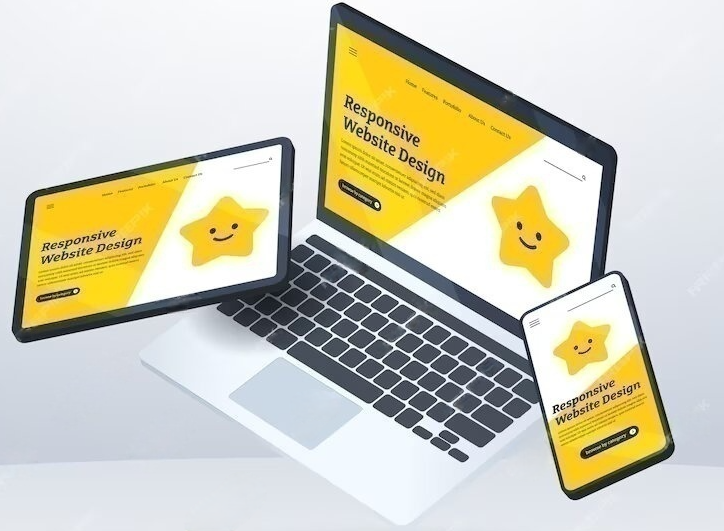In today’s online landscape, having a website is crucial—it’s how you reach out to others. But just any website won’t do. You need one that grabs attention, keeps people interested, and nudges them to act.
This guide will reveal the secrets to making your website stand out, offering essential web design tips on what you must do and what you should avoid. Let’s work together to ensure your website not only attracts visitors but also keeps them coming back for more.

What Is webdesign
7 Key Web Design Tips for Building an Exceptional Website Experience
Creating an outstanding website experience involves paying close attention to details and designing with users in mind. Follow these 7 essential web design tips to make sure your site captures and keeps visitors’ attention.
1. Concentrate on the User Experience (UX)

Do: Make sure your website is easy to use so people can find what they’re looking for fast without any hassle. This means having a simple menu, a search box, and organizing pages in a way that makes sense.
Don’t: Avoid putting too much stuff on your website or making it too busy. Too many things can confuse people and make them leave your site without doing much.
2. Make Mobile-Friendly Adjustments
Do: Make sure your website looks good and works well on phones, tablets, and computers. Text should be easy to read without making it bigger, links should be easy to click, and you shouldn’t have to scroll sideways.

Don’t: Ignoring people who visit your site on their phones or tablets can turn a lot of them away. If your site doesn’t work well on mobile devices, it can annoy users, hurt your website’s good name, and lower its place in search results.
3. Focus on Reducing Load Times

Do: Make your website load faster by making your code simpler and your pictures smaller. You can do this by making images smaller, making your website’s code less complicated, and using browser memory to help things load faster.
Don’t: Using a lot of big, detailed pictures, fancy animations, and complicated coding can make your website slow. If your site takes too long to load, people are likely to leave, which could mean more people leave your site quickly, and it could make your website show up lower in search results.
4. Maintain a Clean and Attractive Design

Do: A simple and clear design lets your message stand out and makes it easier for people to pay attention to what you’re saying. Choosing matching colors and easy-to-read fonts makes your website look good and work well.
Don’t: Too many design bits and pieces can take away from what you’re trying to say. Being creative is great, but the main aim of your design should be to help users understand and engage with your content.
5. Quality Content

Do: Good content grabs your audience’s attention and helps your website rank better in search results. It should be unique, helpful, and really speak to what your audience cares about.
Don’t: Focusing too much on making your website look nice while ignoring the quality of your content can result in a good-looking site that doesn’t have much to offer. People visit your site looking for information or answers; if the content isn’t interesting or useful, even the best design won’t keep them around.
6. SEO is Your Strongest Ally

Do: Using SEO tricks helps search engines find and show your website to people who might want to visit it. This means picking the right words, making your titles and descriptions clear, and organizing your site so search engines like it.
Don’t: If you don’t pay attention to SEO, your website might as well be hidden. Without making your site easy for search engines to understand, it might not show up when people look for it, which means a lot fewer people will find it.
7. Keep Testing and Updating

Do: Keep testing and updating your website to make it better, using what you learn from real visitors. Tools like A/B testing and checking website stats can tell you what users like, helping you decide how to improve your design and content.
Don’t: If you don’t change your website, it won’t keep up with what people want or the latest internet tools. Your site needs regular refreshes to stay interesting and work well.
By using these tips, you can make a website that doesn’t just look nice but also works great, making visitors happy and helping you reach your goals online.
The Fundamental Importance of Web Design in Online Success
The fundamental importance of web design in online success cannot be overstated. In the vast digital landscape, a well-designed website serves as the cornerstone of a brand‘s online presence, acting as the virtual storefront that greets and engages visitors. Beyond mere aesthetics, effective web design encompasses usability, functionality, and accessibility, ensuring that users can navigate seamlessly and find what they need effortlessly.
Moreover, here are some additional importance or influence of web design:
1. First Impressions:
Your website is like the front door of your business online. It’s the first thing people see, and it shapes what they think about your brand. A clean, easy-to-use website gives a good first impression, making people want to explore more.
2. User Experience (UX):
Good website design is all about making things easy for the people who visit. It means they can find what they want easily, move around without any problems, and do what they came to do without any hassle. When a website works smoothly, it keeps visitors interested and makes them want to come back.
3. Brand Representation:
Your website shows off what your brand is all about visually. Everything from the colors and pictures to the fonts and layout helps people understand what your brand stands for. When your website looks consistent, it helps people recognize and trust your brand more.
4. Search Engine Visibility:
Making sure your website shows up well in search results is a big part of good web design. By organizing your website properly, using the right words, and making sure it loads quickly, you increase the chances of more people finding your site through search engines.
5. Conversion Rate Optimization (CRO):
A well-designed website is set up to encourage people to do what you want them to do. Clear buttons, easy navigation, and convincing content help guide visitors to take actions like buying something or signing up for your services.
6. Competitive Edge:
In today’s online world, a professionally designed website can make you stand out from your competitors. It not only attracts people but also keeps them interested, making them more likely to choose your brand over others.
7. Adaptability and Innovation:
Websites need to keep up with changes in technology and what people like. Making sure your site works well on different devices and adding new features keeps it up-to-date and interesting for visitors.
8. Customer Engagement and Retention:
Engaging design elements and personalized content keep visitors interested and encourage them to spend more time on your site. Building a connection with your audience makes them more likely to come back and recommend your brand to others.
9. Data-Driven Optimization:
Good web design involves looking at data to see what’s working and what needs to improve. By studying how people use your site and testing different things, you can make it even better over time.
10. Business Growth and Success:
Ultimately, a well-designed website helps you achieve your business goals. It brings in more visitors, turns them into customers, and builds up your brand, leading to more success in the long run.






I thank for the information. I did not know it.